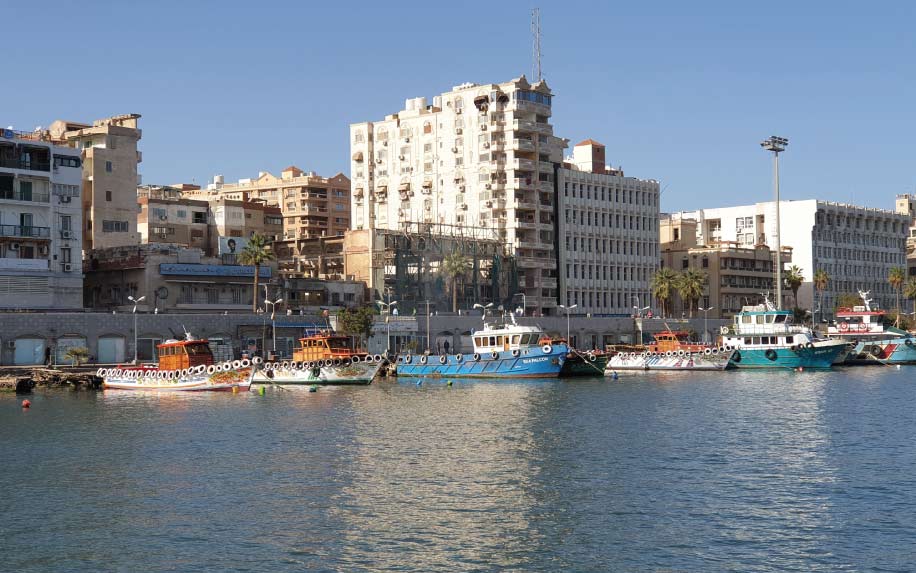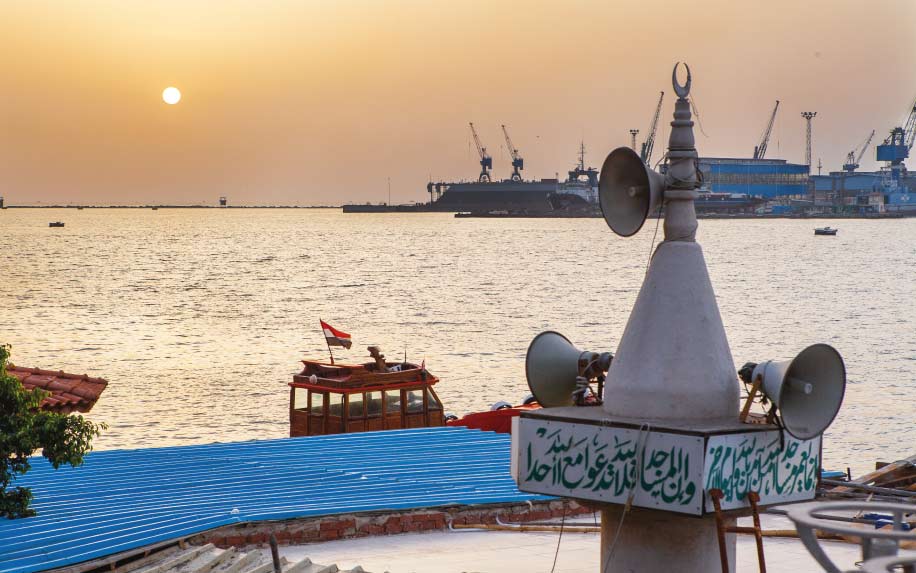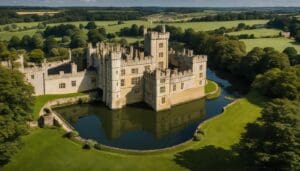Things to Do in Port Said

Updated On: November 07, 2023 by Ahmed Samir
Port Said is a coastal city in Egypt. It is located in north eastern Egypt at the head of the northern entrance to the Suez Canal, bordered to the east by Port Fouad, to the north by the Mediterranean Sea, and to the south by Ismailia. The area of the city is 845,445 km² and it is divided into seven districts which are Al-Zohour District, Al-Janoub District, Suburbs District, Al-Gharb District, Al-Arab District, Al-Manakh District, and Al-Sharq District.
The city is named after Mohamed Said Pasha, the governor of Egypt and the origin of the name goes back to the International Committee which was formed from England, France, Russia, Austria, and Spain where this committee decided in the meeting that In 1855, the name Port Said was chosen.
Port Said became a famous city after digging the Suez Canal and its location at the northern entrance of it. In the Suez Canal large numbers of ships pass daily and the city was the main place where it took care of container handling through unloading and shipping operations for ships, shipping, and transportation to warehouses and providing ships with fuel, food, and water.
The History of Port Said
In the old days, the city was a village for fishermen, then after the Islamic conquest of Egypt it became a fortress and an active port but it was destroyed during the Crusaders’ invasions and in 1859, when de Lesseps began work on digging the Suez Canal during the reign of Khedive Ismail, work has begun in constructing Port Said overlooking the northern entrance to the Suez Canal.
Port Said gained international fame during the period from the end of the 19th century and the beginning of the 20th century as a special seaport. An English writer at the time said, “If you want to meet someone you know, who is always traveling, there are two places on the globe that allow you to do that, where you have to sit and wait for his arrival sooner or later, namely: London and Port Said”.
The city of Port Said was called the intrepid city, that was because of the many wars and battles that took place in the city and the bravery of its people in defending their homeland against any aggressor or occupier, especially in 1967 against the Israeli forces and until 1973 and the October victory. For the rare heroism of its people, Port Said became the hub of the Egyptian armed resistance.
Today, it’s one of the most popular summer destinations in Egypt.
Things to do in Port Said
Port Said is a famous city in Egypt. It is full of a lot of attractions and places to visit, where many tourists come from all over the world to see the beauty of this city and also Egyptians love visiting it and spending a great time in Port Said.
1. Suez Canal Authority Building
This is one of the most important buildings in Port Said, it was the first building to be established by Khedive Ismail on the shore of the canal. The Suez Canal Authority Building was built for receiving the Khedive’s guests, the kings and heads of state of the world who visited Egypt during his reign, and the guests of the Suez Canal’s inauguration ceremony.
It was called the Dome Building because it was built with three green domes. When you enter the building, you will see the interior decoration of the ceilings and the chandeliers that decorate the building from the inside. During World War l, Britain bought the building to be the headquarters of the British army in the Middle East and that was until 1956.
2. Port Said Lighthouse
Port Said Lighthouse is one of the most important and famous attractions in the city. It is also considered a unique model for the development of 19th-century architecture in Port Said and it was built during the reign of Khedive Ismail in 1869 by the French engineer François Connier and its height is 56 meters. It was constructed in Al-Sharq Neighborhood in order to guide the ships passing through the Suez Canal. This was the first lighthouse to be built with reinforced concrete, and it was the first time that this technology was used for this type of work in the world.
In 1997, due to the expansions of the governorate and the rise of residential towers around this unique building from every direction the lighthouse was closed and it was replaced by another lighthouse west of the city. Port Said Lighthouse stands as an important historical and archaeological building that constitutes a prominent landmark.

Mohamed Adel via Unsplash
3. De Lesseps Statue Base
It is one of the famous attractions in the city of Port Said, it is known for its marvelous design. The Statue of De Lesseps was a memorial to Ferdinand De Lesseps, the founder of the idea of the Suez Canal project. The statue was erected at the northern entrance to the Suez Canal in Port Said on November 17, 1899, which coincided with the 30th anniversary of the opening of the Suez Canal for international navigation.
The statue was designed by the French artist Emmanuel Frimim and made of bronze and iron and painted in green bronze. The statue is hollow from the inside and weighs about 17 tons and has a height of 7.5 meters on the metal base. Ferdinand De Lesseps came up with the idea of digging the Suez Canal, and his statue remained in its place at the entrance to the Suez Canal until the late leader Gamal Abdel Nasser decided to nationalize the canal, and when the tripartite aggression against Egypt in 1956 took place, the popular resistance removed the statue, but the base of the statue with the plaque is still in place.
4. Military Museum
The Port Said Military Museum was established in 1964 to commemorate the tripartite aggression against Port Said in 1956, and it was inaugurated in memory of the Port Said National Day celebrations on December 23, 1964. The museum was built on an area of 7000 square meters consisting of a museum garden dedicated to the open museum display and overlooked by the main building of the museum, which includes several exhibition halls.
You’ll find interesting artefacts from throughout Egypt’s history.
The museum is divided into several sections and halls which are outdoor exhibition areas, permanent exhibition halls, main lobby, Suez Canal Hall, the 1956 War Hall, and the October 1973 Hall. All these halls tell the epic tales of the steadfastness and valor of the people of Port Said in confronting the aggressors and invaders in 1956 and during the October War in 1973.
5. Abdul Rahman Lotfy Mosque
The mosque is one of the oldest in Port Said. Its design is inspired by Andalusian heritage and was opened by King Farouk and reopened by President Gamal Abdel Nasser in 1954. It was built by Abdel Rahman Pasha Lotfi with the approval of Sherine Pasha, who was Port Said Governor at the time and that made it the only mosque that overlooks the port and the ships passing between the two banks of the Suez Canal.
6. Saint Eugenie’s Church
Saint Eugene’s Church was founded in 1863 and opened in 1890. It is one of the largest churches in Port Said and it contains a series of Islamic and Coptic monuments. The church also includes original antique paintings signed by painters that are more than a hundred years old and rare statues dating back to the 19th century. Eugenie grew up in the year 245 AD in the city of Alexandria and she sacrificed her beauty and all her wealth, where she had her head cut off with a sword because she refused to worship idols.
The church was built in the European style, which combines elements of the neoclassical style and the neo-Renaissance style. The church was divided by a group of columns into three vertical corridors according to what the altar area is called the middle portico, the most spacious, and it is called the great portico, at the end of which there is the main apse.
7. Port Said National Museum
The National Museum is located on an area of 13,000 square meters, it was built in 1963 but construction halted for 13 years during the period from 1967 to 1980 because of the 1967 war. The museum was reconstructed and opened on the governorate’s National Day celebrations in December 1986 and it includes about 9,000 artifacts from all eras distributed over 3 halls, starting from the Pharaonic era, passing through the Greek and Roman eras, the Coptic and Islamic eras, and ending with the modern era.
8. Abbasid Mosque
The Abbasid Mosque is one of the oldest and most famous mosques built in Port Said in Egypt. It was built in 1904 and was during the reign of Egypt’s Khedive Abbas Helmy II and that’s why the mosque was named after him. The Abbasid Mosque represents a distinct historical architectural era, it was built among 102 mosques of this style in various Egyptian cities. The area of the mosque is 766 square meters and it still retains most of its architectural and decorative elements.
It is one of the best preserved historical sites in Egypt.
9. Victory Museum
A museum of fine arts, it is located on 23 July Street, below the Obelisk of the Martyrs which is a memorial erected in memory of the martyrs of Port Said. Former President Gamal Abdel Nasser opened it on Victory Day on December 23, 1959. The museum was closed for many years due to the war that took place in 1973, but it was reopened again on 25 December 1995 and with a new name; the Victory Museum of Modern Art.
When you visit the museum, you will find 75 artworks created by Egypt’s top artists in various branches of plastic art, such as sculpture, photography, drawing, graphics, and ceramics, on various topics, most of which revolve around national topics as well as the topic of war and peace. The Victory Museum of Modern Art is one of the important cultural and artistic edifices of the plastic arts sector, and it receives great attention because of the works of salient artists in Egypt from the holdings of the Egyptian Museum of Modern Art that perpetuate the march of the Egyptian people’s struggle.
10. Al Tawfiqi Mosque
The mosque was built in 1860, as the Suez Canal Company wanted to build a mosque for Egyptian workers. In 1869, the mosque was rebuilt again from wood, which did not last long because of the wastewater, and when Khedive Tawfiq visit the city in 1881, he gave orders to rebuild the mosque in its current location with a school attached, and the mosque was reopened on December 7, 1882.
11. Commonwealth Cemeteries
It is one of 16 cemeteries spread in many Egyptian cities, and it is supervised by the Commonwealth Commission and has the attention of thousands of descendants of the victims of the First and Second World Wars from around the world. The cemetery is located in the Zohour neighborhood in the eastern side of the ancient Muslim and Christian cemeteries and includes 1094 graves, including 983 graves from World War I and 111 graves from World War II, containing the remains of soldiers and civilians who inhabited Port Said in the early twentieth century, and the number of English soldiers is 983 from World War I victims, and 11 from World War II, as well as other soldiers representing Canada, Australia, New Zealand, South Africa, India, East, and West Africa, Serbia and America.
12. Tenis Island
It is an island located southwest of Port Said about 9 km away from Lake Manzala and the meaning of the word Tenis is Island in the Greek Language. Tenis was a prosperous Egyptian city in Islamic times and it was an important port for the export of Egyptian agricultural products and was famous for the textile industry in Egypt. The island contains the archaeological Tenis Hill, which attracts a large number of tourists and includes a large number of antiquities dating back to the Islamic era. The island is about 8 km in area and you can easily reach it within half an hour via motorboat.
13. Port Said City Monument
It is an important attraction in the city and was built to commemorate the martyrs of the valiant city during its various battles. The monument appears in the form of a pharaonic obelisk and was completely covered with high-end gray granite to resemble the obelisks of the pharaohs who were keen to establish them in their places of victory.
Port Said is perfect for an off the beaten track trip to Egypt.
14. Roman Cathedral
The city of Port Said contains many ancient churches that date back to different eras and tell the history of these different periods. One of these churches is the Roman Cathedral which was built in 1934 at the entrance of the Suez Canal and was opened on January 13, 1937. The cathedral was designed by the French architect Jean Holloh. It is divided into three sections separated by long, octagonal columns and crowned with capitals symbolizing the names of the Virgin Mary. The church is characterized as being in the shape of Noah’s Ark, a symbol of salvation from the world.
Inside the church, there is a crucifix with a life-size copper statue of Jesus Christ made by the artist Pierleskar, one of the world’s largest sculptors.
15. El-Farma:
It was the eastern fortress of Egypt since the ancient Egyptian era, and it was called Paramon which means the city of the god Amun and the Romans called it Beluz meaning mud or muddy because it was located in an area of mud due to the proximity to the Mediterranean Sea. Its people worked in barley, fodder, and seed trade due to the frequent passage of caravans transporting them, because their residence was on the eastern edge of Lake Manzala, specifically between the lake and the dunes.
El-Farma is located in an important place that facilitates communication inside and outside the country by land and sea and it was the first important Egyptian port on the Mediterranean coast from the east. A lot of destruction and sabotage took place in El-Farma through the ages and the geographical factors that occurred in the Sinai region led to the drying up of the Nile branch there which changed the trade route.

Rafik Wahba via Unsplash
16. Port Fouad
Port Fouad is located inside Port Said on the eastern bank of the Suez Canal. It is designed in the French style of streets, and it was built in order to serve the Suez Canal facility and as homes for the French who worked in the canal. Port Fouad was built in 1920. It was named after King Fouad I and has many compact villas and wide squares and large gardens. While you are there, don’t miss riding the ferry to enjoy seeing the ships passing through the Suez Canal.
17. Salt Mountains:
It is a famous place to visit in Port Said, where many people go, wearing heavy winter clothes, to take souvenir photos in the middle of the Salt Mountains, appearing as though they’ve been to the North Pole or one of the countries famous for its snow. Many photo sessions take place there, especially wedding and engagement photos because the backdrop is absolutely beautiful.
18. Said Stone
It was named after Khedive Said and it extends from Port Fouad into the sea and ends at Labogas and it includes different types of the most beautiful formations of fish, including Sea Bass, lotus, and bass, and also sea bream, mullet, banana fish, and more.
19. Port Said Corniche
It is one of the areas most visited by the people of Port Said on holidays and vacations for hiking, and this bridge or walkway extends from the Shooting Club in the east to the beautiful port in the west.
Port Said Corniche has cheerful lighting that brings joy and pleasure to the heart of the people of Port Said and the tourists who are keen to spend a special time during their tour in Port Said. The walkway allows you to enjoy watching the Suez Canal and the ships passing through it as well as the beauty of Port Fouad.
20. Al Montazah Garden
It is one of the largest parks in Port Said. It extends over a large area in a beautiful place in Port Fouad and it has a large number of rare and perennial tree species, along with the most beautiful forms of flowers and wide green areas.
For more travel advice, check out our top destinations in Egypt.






